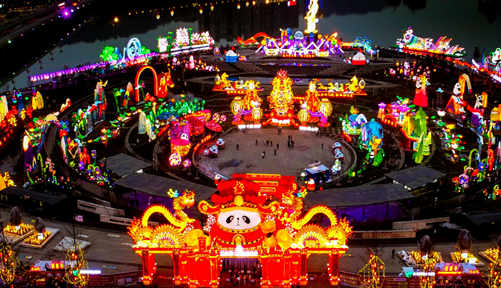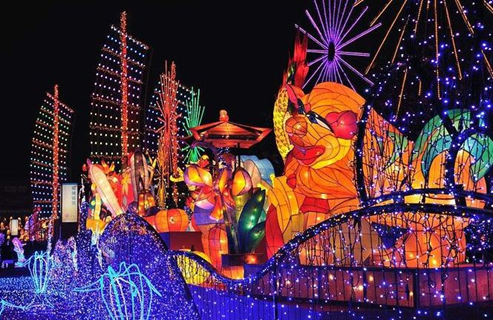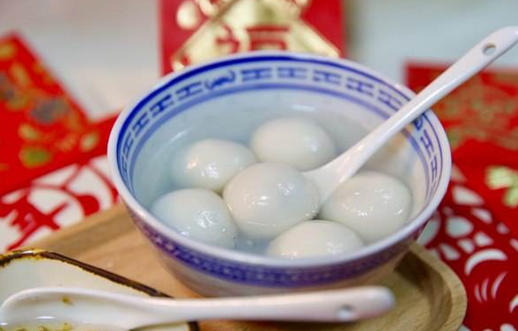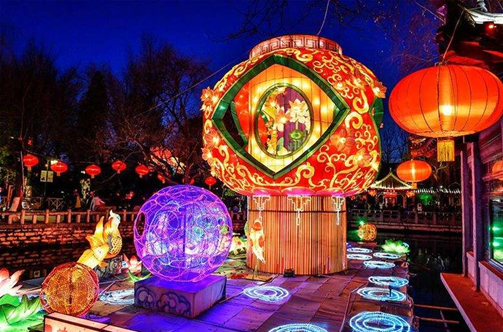Lantern
Festival, also known as Shangyuan Festival, Yuanxi Festival or Lantern Festival
is one of the traditional Chinese festivals. It is held on the fifteenth of the
first lunar month of each year. The first lunar month is the first month of the
lunar calendar. The ancients called "night" as "xiao". The
fifteenth of the first month is the first full moon night of the year, so the
fifteenth of the first month is called the "Lantern Festival".

According
to Taoism, the fifteenth of the first lunar month is also called
"Shangyuan Festival". The custom of Lantern Festival has been
dominated by the custom of warm and festive lantern viewing since ancient
times. The formation of the Lantern Festival takes a long time, rooted in the
ancient customs of people turning on lanterns to pray for blessings. According
to relevant records, the fifteenth of the first lunar month has been paid
attention to in the Western Han Dynasty.
The
Lantern Festival is one of China's traditional festivals. It mainly includes a
series of traditional folk activities such as viewing lanterns, eating rice
balls, guessing lantern riddles, and setting off fireworks. In addition, many
local Lantern Festival also added traditional folk performances such as dragon
lanterns, lion dances, walking on stilts, paddling boats, twisting yangko, and
playing Taiping drums. In June 2008, the Lantern Festival was selected as the
second batch of national intangible cultural heritage.

The
Lantern Festival is a traditional Chinese festival and it is celebrated all
over the country. Among them, eating Yuanxiao, admiring the lantern, dragon
dance, and lion dance are several important folk customs of Lantern Festival. On
the fifteenth day of the first lunar month, there is a custom of eating
Yuanxiao. "Yuanxiao" as food has a long history in our country. In
the Song Dynasty, a novel food for the Lantern Festival was popular among the
people. This kind of food was first called "Floating Yuanzi" and
later "Yuanxiao".
Yuanxiao
is filled with sugar, rose, sesame, red bean paste, cinnamon, walnut kernel,
nut kernel, jujube puree, etc. It is wrapped in glutinous rice flour into a
round shape, which can be meat or vegetable and has different flavors. It can
be cooked in soup, deep-fried, and steamed, which means a happy reunion. The
glutinous rice balls in Shaanxi are not wrapped, but "rolled" in
glutinous rice flour, boiled or fried. The shape of the Lantern Festival
symbolizes family reunion.

Appreciating
lanterns is one of the traditional festival customs of Lantern Festival, which
began in the Western Han Dynasty and flourished in the Sui and Tang Dynasties.
The fifteenth of the first lunar month is the most lively time of the year to
enjoy lanterns and fireworks. On the fifteenth day of the first lunar month,
the prosperous streets were full of lanterns. The crowd will walk to the street
to admire all kinds of lanterns. The shapes of lanterns are different, such as
palace lanterns, animal head lanterns, revolving lanterns, flower lanterns,
bird lanterns and so on. These lantern exhibitions attract the crowd watching
the lanterns.

Guessing
lantern riddles, also known as lantern riddles, is a unique form of traditional
folk cultural and entertainment activities with rich ethnic style in China. It
is a characteristic activity of Lantern Festival that has been spread since
ancient times. On the fifteenth day of the first lunar month, people will hang
up lanterns and set off fireworks. Some people write riddles on paper and paste
them on colorful lanterns for people to guess.
Because
riddles can enlighten wisdom and cater to the festive atmosphere, so many
people responded and then riddles gradually became an indispensable program for
the Lantern Festival. Lantern riddles add to the festive atmosphere, showing
the wisdom of the ancient working people and their yearning for a better life.

Comment Cancel reply